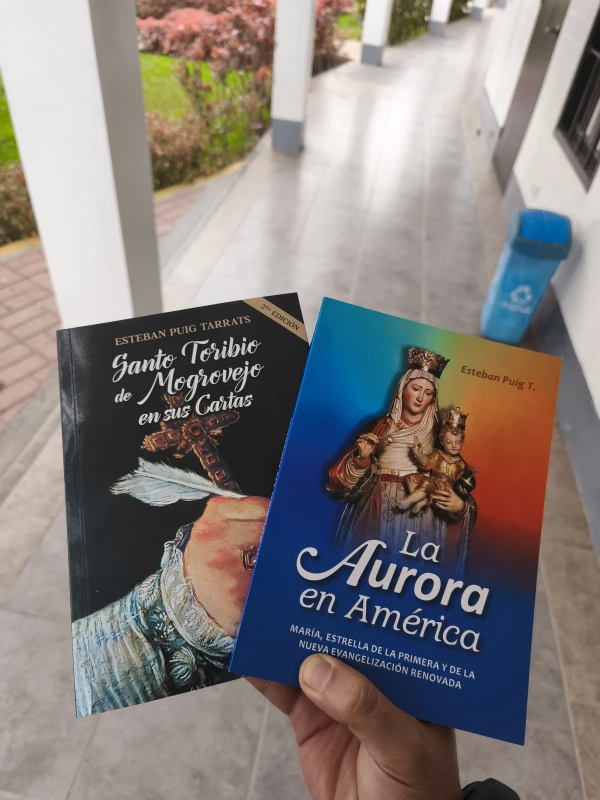“I am a poor priest who goes in search of love,” says Mons. Esteban Puig Tarrats, a priest who This 2025 is 70 years of priestly life. At 93, he has not retired and Write a new book about the Virgin Mary.
Mons. Puig was born on May 22, 1932 in Bañolas (Banyoles), Girona, Spain. He was ordained a priest in 1955 and arrived in Peru on January 22, 1960, when he was 27 years old. Since 1972 he also has Peruvian nationality. He currently resides in the Major Seminar “San José”, in Cañete, where he continues to accompany future presbyters.
Receive the main news of ACI Press by WhatsApp and Telegram
It is increasingly difficult to see Catholic news on social networks. Subscribe to our free channels today:
Priest and tireless missionary, Mons. Puig celebrates his 70th priestly anniversary remembering with emotion the moments that marked his life, from the horrors of the Spanish civil war to his tireless pastoral work in rural areas of the Andean country.
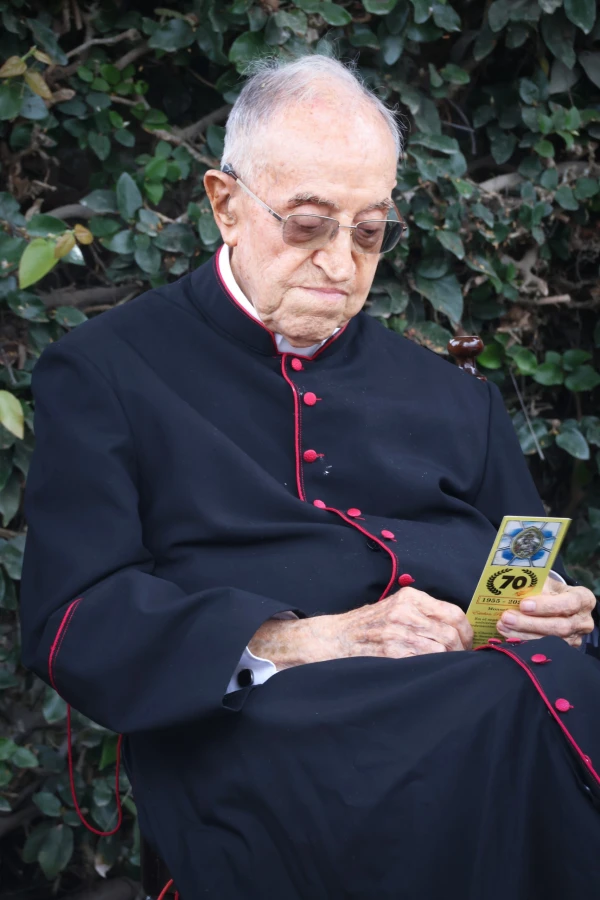
A call marked by history
His vocation was born during the Spanish Civil War, marked by religious persecution. “Why did I become a priest? Is that after the war in Spain … They had killed more than 800 priests. We young people had an eagerness to replace these men”Says Mons. Puig when he started this interview with ACI Press.
“In my house there was a priest hidden on the terrace. I was six years old. One day I saw him go down, wrapped in a robe, and I shouted: ‘Dad, a man!’. My older brother reacted quickly, put on the robe and said: ‘That man is me’. If they discovered us, they killed us all“, remember.
“That priest had baptized us all and was a very close friend of the family. Then he told me jokingly: ‘You almost kill us,” adds Mons. Puig.
That experience aroused a deep admiration for the priesthood. “In my town, after the war, twenty young people entered the seminar. Eight or ten came to order.”
When he was ordered, Mons. Puig felt the desire to come to America, responding to the call of Pope Pius XII. Thus he arrived at Peru, as part of a missionary cooperation initiative between the dioceses.
“The priest who was coming had to count on the consent of the bishop who sent him and from which he received it. Some, unfortunately, abandoned the vocation. But others stayed,” he says.
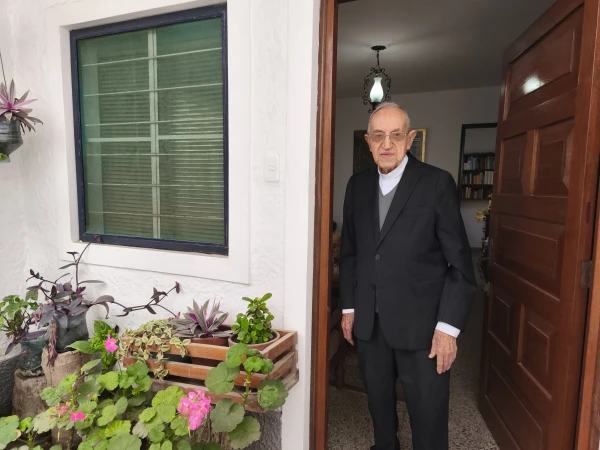
Today, seven decades later, Mons. Puig continues to live his vocation with joy. “Being a priest is something fundamental. And as the song says: I am a poor priest who goes in search of love.”
A Peru that transformed his priesthood
From Yauyos to Piura, through Arequipa and Chiclayo, his ministry has been at the service of the poor. “I met villages where a priest did not arrive for 20 years. I was going from town to town, attended the masses, burials …”, he says.
In his early years in Peru (1960–1974), he worked in the Prelature of Yauyos, Huarochirí and Cañete as a promoter of vocations, organizer of popular missions and trainer in catechesis. Then, in the Archdiocese of Piura (1974–1996), he promoted social works, built temples and founded the “Ángel de la Guarda” Children’s College, the Nazareth House, the CEO Prolabor, dining rooms and medical posts, especially during the phenomenon of “El Niño”.
“Why did I do the children’s center? Because I noticed that the children needed it. Who inspires me that? Something is the Holy Spirit.”
The Virgin saved him from falling for a cliff
“I have always noticed that the priest has a special protection of the Virgin,” he says. “I have felt that she has guided me, she has protected me, even when I was about to fall to the precipice with a mule. I said: ‘Back, back!’, And ignored me. The angel also helped,” he says.
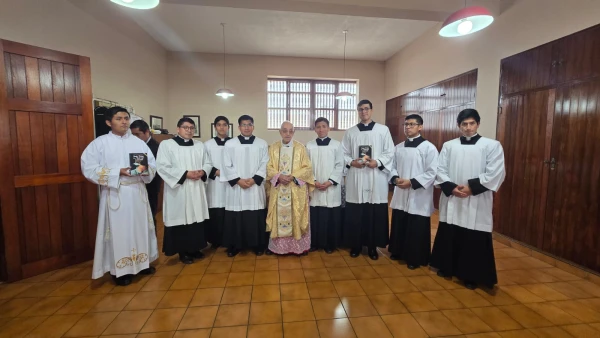
This Marian devotion has led him to prepare his most recent book, dedicated entirely to the Marian Advocations of Peru. “Each parish has its Virgin. I have written articles about this for years and I want to collect everything with photos. It will be my gift to it.”
Mons. Puig has known about three popes (San Juan Paul II, Benedict XVI and Francisco) and does not hesitate to express his admiration for Pope Leo XIV: “This Pope is providential. He has returned to the traditional, as formerly. And the important thing is that he works with the poor. That is what the Holy Spirit raises.”
Nor does Benedict XVI forget, whom he considers a “modern San Agustín.” “A Pope with the wisdom of 20 theologians and the simplicity of a child.”
In 2011, he was distinguished by Benedict XVI with the Title of Honor Prelate of His Holiness.
A village priesthood
Throughout his life, he has collected proves and popular expressions that he published in Piurano folklore books. “The people have a precious wisdom. Once, a man from the mountains told me: ‘Father, I’ve been walking for three hours to go to Mass and while I walk I am taking out flowers that I put them in the mouth, because I will receive the Lord.’ What a bigger faith!”He exclaimed.
For him, being close to the town is the heart of his priesthood. “We are not so serious, as Pope Francis said, neither rigid nor jam. You have to be with the people. When I see an old man in Lima, I approach, I speak to them.”
The Holy Mass, Prayer and Santo Toribio de Mogrovejo
“Mass is the most impressive mystery. A man turns bread into the body and wine into the blood of Christ. Why? Because God has chosen you. That’s all, ”he explains with conviction.
And he adds: “My trade is to pray. We pray for people’s problems. No one else can do this for them like the priest. The priest who does not pray, fails.”
Upon turning his 70 years of priesthood, Mons. Puig keeps a slogan that he remembers from Santo Toribio de Mogrovejo, his great model: “It’s time to walk.”
“All these years I have always been with the protection of the Virgin and the Guardian Angel. I have fallen from the horse, but I have always risen. As Santo Toribio, who was the father of the poor and formator of a society. Thanks to him the Peruvian church was configured.”
The legacy you want to leave
Through his books, his letters to seminarians, his spiritual reflections, Mons. Puig wants to leave a clear message: “Culture humanizes. Faith is also transmitted with art, music, poetry, tradition …”.
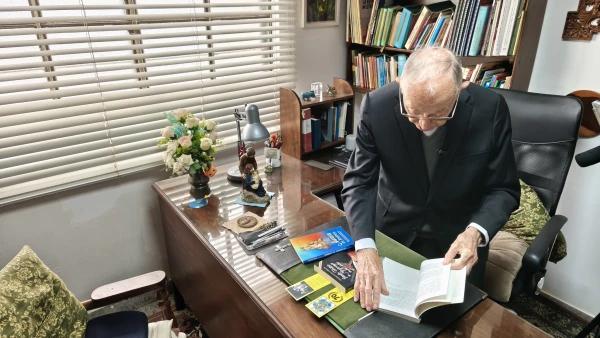
In its vast intellectual production, works such as Brief Piurano folk dictionary, Introduction to the ancient history of Peru, The Aurora de América, Mary’s look, It’s time to walk (about Santo Toribio) and Marking footprints. He has also written numerous newspaper articles, Sunday comments of the Gospel, presentations, and even religious hymns.
At the end of the interview, Mons. Puig concludes with his characteristic humor: “I like to be in the Sueito, with the simple people. And talk to them. But don’t ask me the time … that is the only thing I never know.”
